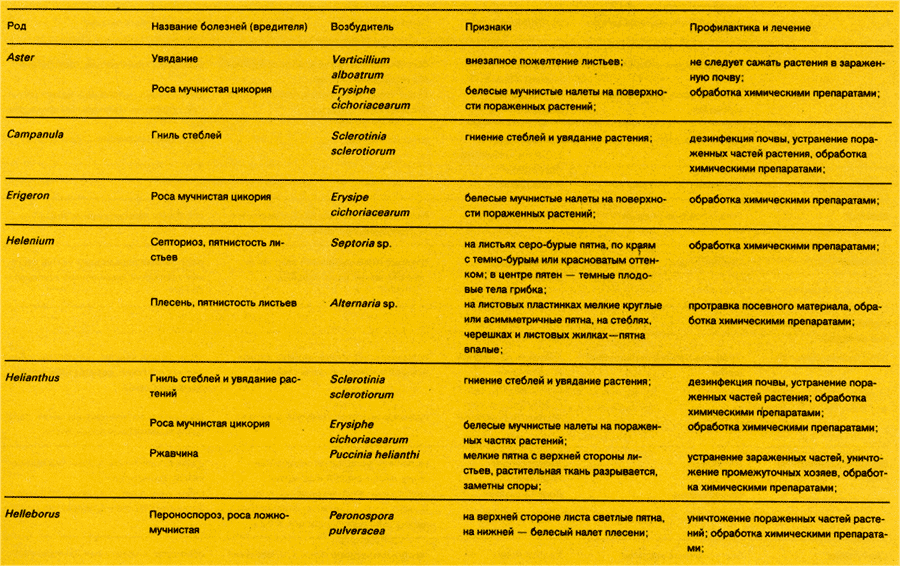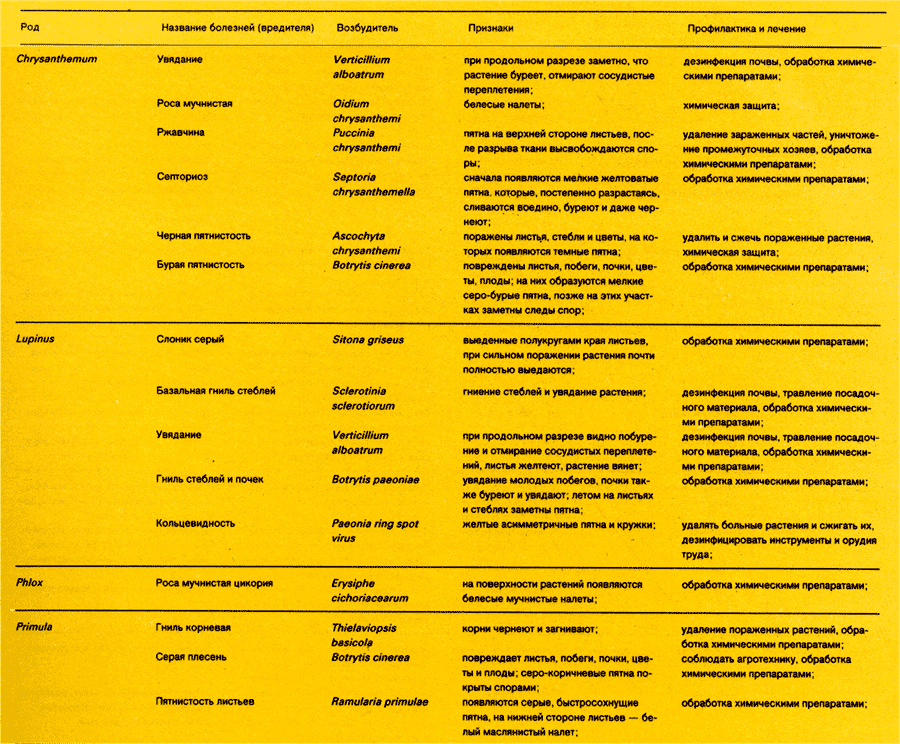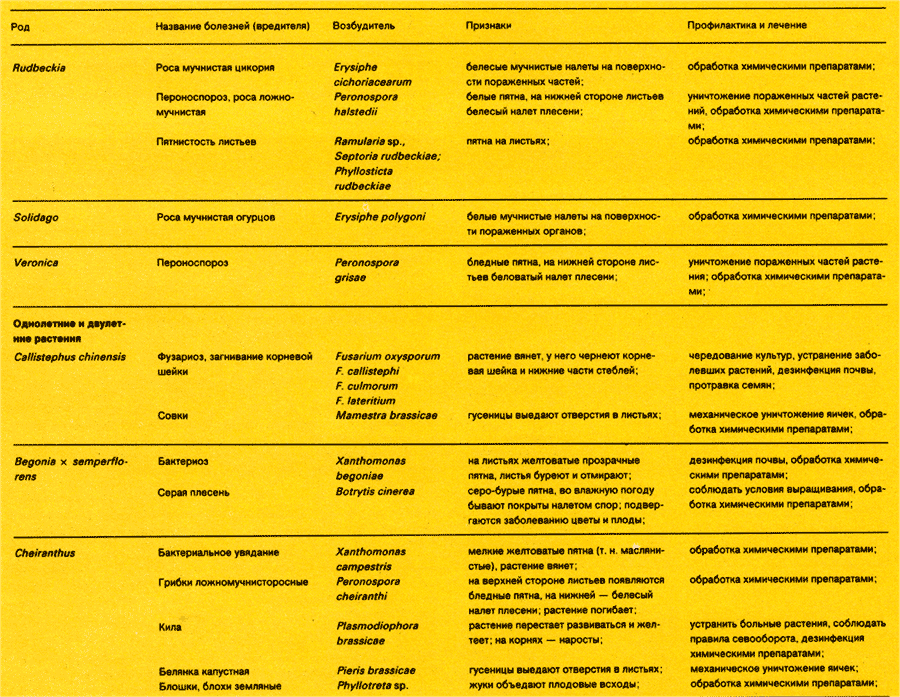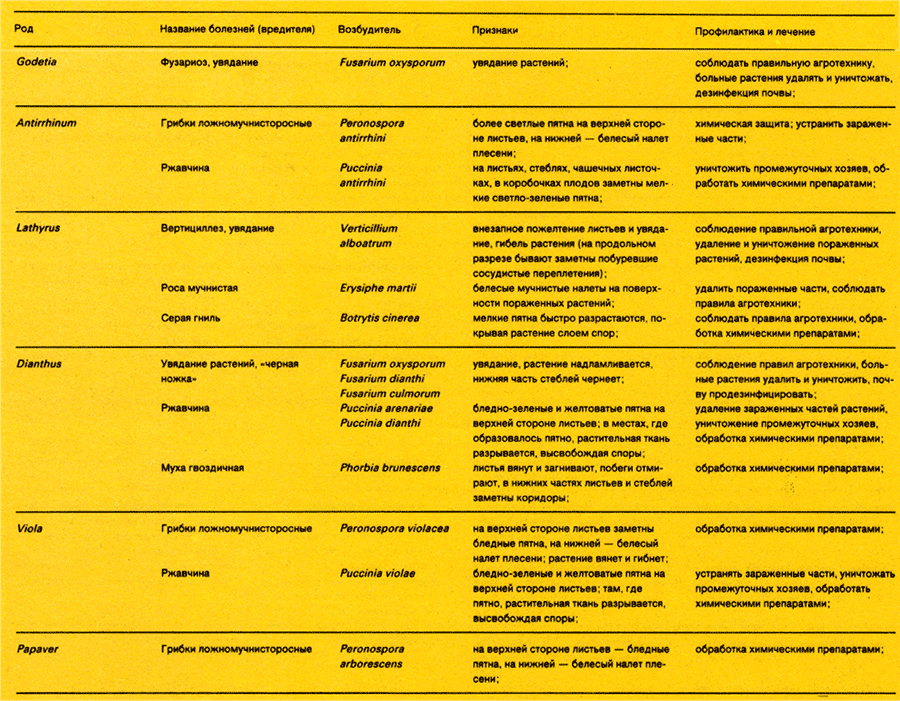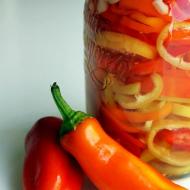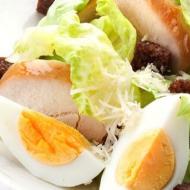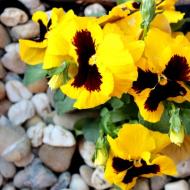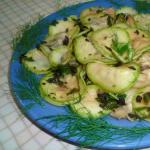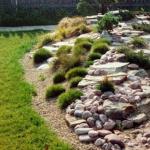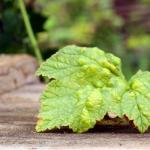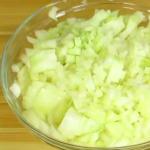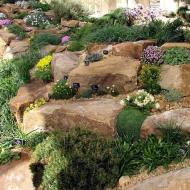
Plant pests living in the soil
These pests damage the underground part of plants. Some species spoil plantings in new, recently planted gardens, others - in formed ones that have been fruiting for a number of years. In new areas, most often there are larvae of click beetles - wireworms, caterpillars of noxious scoops, larvae of beetles. Where the garden is cultivated for a long time and the land is rich in organic matter, worms, nematodes, centipedes, garden midge larvae, etc. live.
Caterpillars of various night butterflies are terrible for the garden only in the first year of its cultivation, since conditions unfavorable for the development of this pest arise on perennial beds that are well cared for. Wireworms remain in new gardens for several seasons, as their development cycle covers 3-5 calendar years. As for the rest of the soil pests, they are dangerous, especially where the soil is excessively wet.
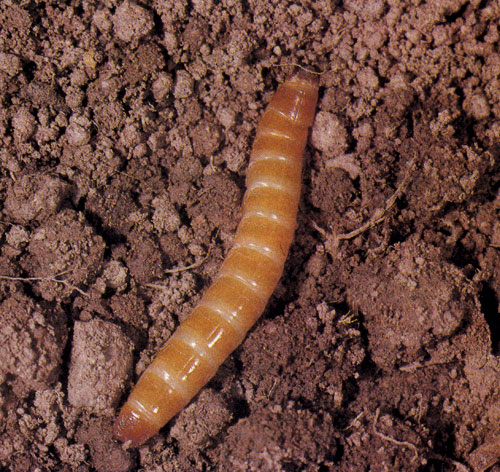
scoops
From scoops in gardens most often appear winter scoop ( Scotia segetum), upsilon scoop ( Scotia ypsilon), exclamation scoop ( Scotia exclamationis) and blackish scoop C ( Amathes C-nigrum), as well as some others. During the spring months, their caterpillars damage the roots of all types of vegetables and ornamental crops. First, the caterpillars occupy the aerial parts of plants and gnaw round holes in the leaves. At the third stage of their development, they move into the soil and eat the roots. Most often, scoops attack cabbage, lettuce, carrots, seedlings of ornamental plants. Unfortunately, gardeners usually do not notice in time that the caterpillars eat the above-ground parts of plants, and therefore do not take the necessary protective measures.
Click beetle larvae - wireworms
In young, recently planted gardens or in old ones, but in those places where grasses used to grow, and beds have now been created, wireworms and click beetle larvae cause great harm to plantings. The greatest damage comes from the striped clicker, or bread ( Agriotes lineatus), and smoky nutcracker ( A.ustulatus); in some places there are four more species of this insect.
Click beetle larvae attack the underground organs of vegetable crops, ornamental plants and strawberries. They eat small roots of seedlings, eat away or bite the main root of the plant, make corridors, for example, in carrots, celery, as well as in tulip and daffodil bulbs, in tubers of gladioli and dahlias. Damaged plants begin to twist, wither; their underground parts, important from a practical point of view, lose all value. Wireworms cause the greatest harm in March-June and September-October, when they are placed in the upper layers of the soil. During the drier summer season, the larvae crawl deeper into the ground. Only the larvae of the brilliant clicker ( Corymbites aeneus) remain on the soil surface and eat the succulent parts of plants. The development cycle of the nutcracker is 3-5 years, during this period the plants in the beds where this pest has settled are under constant threat.
May beetle larvae
From time to time, beetles may appear in the garden. Most often it is the western May Khrushchev ( Melolontha melolontha). It lives in the soil and damages the underground organs of plants - vegetables, ornamental crops, strawberries and fruit trees. If there are 1-2 larvae per square meter of garden area, then it is already necessary to sound the alarm. Seedlings of vegetables and ornamental plants damaged by the larva die; fruit trees are only threatened in the first two years after planting.

During the years of the abundant appearance of the western May beetles, the damage they cause to cherry, apple, plum trees and roses is especially great. During such periods, it is recommended to shake the beetles from the trees and mechanically destroy them.
Long-legged larvae(Tipulidae)
In gardens planted in humid places, vegetables and ornamental plants are under threat of attack by larvae of weevils in the early years. Therefore, it is advisable to check, even before laying out the beds on moderately blocking lands, whether there are weevils here and in what quantity. The test is carried out as follows: on a test area measuring one square. a meter is mowed or pulled out all the vegetation, and the bare surface is watered with a solution of edible salt (at the rate of 1 kg of salt per 5 liters of water). After such watering, the larvae will crawl out to the surface. After counting them, we will get an idea of the degree of contamination of the territory and we can, if necessary, resort to chemical means of protection.
The longer the land is cultivated in the garden, the more pests there are in it. Let's name a few more common ones.
Centipedes
Millipedes, especially the fragile centipede ( Polydesmus complanatus) and the centipede blind ( Blaniulus guttulatus), can multiply excessively in composts. In wet summers, they are able to cause especially great harm to seedlings, to the roots of which earth from compost was added during planting. Centipedes also eat bulbs of ornamental plants, regale on ripening strawberries. Where these pests appeared, it is necessary to reduce the moisture content of the earth by adding ash to it. In the berries, you can put wood wool or some other bedding under the fruits, which will have to be replaced with a new one from time to time.
Earthworms, earthworms (Lumbhcidae)
Earthworms or earthworms are beneficial to the garden. By digging underground corridors, they aerate the soil; a sufficient amount of air also accelerates the process of decomposition of organic substances occurring in it. However, when there are too many worms in the ground, as a result of their activity, the stability of the seedlings decreases, the adhesion of the roots to the soil is weakened, and the germinating plant is drawn under the surface. Therefore, in exceptional cases, it is necessary to protect plants from worms. Then it is recommended to fill the still unsown beds with warm (about 40 ° C) water.
Clover nematode(Ditylenchus dipsaci)
The nematode also lives on many types of weeds, and therefore protection from it is very difficult. It is recommended to destroy the affected plants, reduce soil moisture; if necessary, you can resort to chemicals.
Garden midge larvae (Bibionidae)
In some places, garden midge larvae cause considerable damage to gardens. Female midges lay their testicles in compost or soil well saturated with humus. The larvae of this pest are found mainly in greenhouses and in those beds where compost soil is also added to ordinary garden soil. In summer, the larvae feed on tender roots and smoldering plant debris, and after wintering they attack germinating plants. There is only one way to avoid the mass appearance of garden midge larvae - always use only well-ripened, over-rotted compost.
Medvedka common (gryllotalpa gryllotalpa)
It is very difficult to cope with the common bear. She gnaws roots or makes corridors under the very surface of the earth, thereby loosening young plants. This pest builds clay nests for itself 10 cm below the bed level, so that the roots of planted crops are exposed and wither. The location of such a nest can be found by the so-called. patchy wilt of plants.
The number of bears in the garden can be reduced by catching them with the help of smooth-walled vessels immersed to the very edges in the ground. In June-July, it is recommended to destroy the nests.
Onion mite (Rhizoglyphus echinopus)
It is just as difficult to deal with another soil pest - the root bulbous mite. It damages roots, rhizomes, attacking both food onions and bulbs of ornamental plants. It is not difficult to find out about his “activity”: small, randomly located corridors filled with small brown droppings are visible in the ground. Soil moisture contributes to the reproduction of this pest. You can get rid of the mite by storing the bulbs in a dry, well-ventilated place. Perhaps, if necessary, the use of chemicals.
Pests affecting the aboveground parts of plants
Many pests of garden plants eat their aerial parts.
Slug, gastropods(Gastropoda) Most often, field slug appears in gardens ( Deroceras agreste), as well as a net-like slug ( D. reticulatum), smooth slug ( D. laeve), garden slug ( Arion hortensis) and garden snail ( Helix pomatia). Slugs damage the aboveground and underground parts of plants, eat holes in the bulbs of tulips and daffodils, in the tubers of gladioli and other plants. Of the above-ground organs, leaves and stems suffer the most from them. As for young plants, they are able to completely destroy them. The fact that our garden was visited by slugs, we learn from the top of the eaten leaf blades and the traces left - silvery drying mucus and dark viscous droppings.
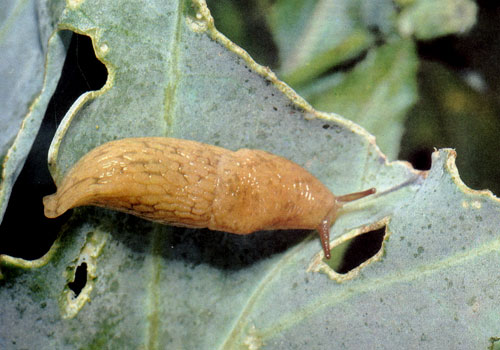
Slugs can be dealt with mechanically. It is also recommended to sprinkle the paths around the beds with lime, ash, pine needles or a chemical preparation. Earwig common ( Forficula auricularis)
The common earwig belongs to the omnivorous pests of the aerial parts of plants in our gardens. This insect eats leaves and stems, feasts on buds and flowers, especially dahlias, carnations and roses. Leaves and petals after the feasts of earwigs acquire jagged edges. This pest also eats ripening fruits - pears, plums, apricots, peaches.
The best way to deal with an earwig is to lure it into specially prepared shelters made of straw, rags, burlap, wood wool, and then destroy them all together.
Spider mites (Tetranychiidae)
Pests of fruit trees, shrubs, various vegetables and ornamental plants also include various types of spider mites. They harm leaves and plants in general by sucking out surface cells. The leaves begin to turn yellow, later turn whitish, discolor, and finally fall off. Next year, plants affected by this pest will, as a rule, have fewer flowers, and, therefore, fewer fruits. Kleschikov is considered dangerous and persistent opponents also because several of their generations manage to develop within one year. Therefore, it is recommended to intensively use chemical preparations against them.
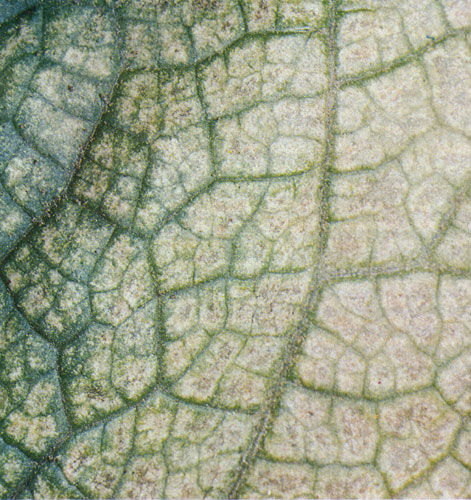
With a strong pest attack, the loss can be 30-70% of the total crop, and the formation of flowers can decrease by 75%. In spring, mites are not so noticeable, however, spraying with chemicals carried out at this particular time gives better results than twice, but at the height of summer itself. Ticks cause especially great damage in warm, dry weather. Protective measures against mites should be carried out primarily before flowering and immediately after it ends. Spring spraying against the fruit mite (Panonychus ulmi) should be timed to coincide with the period when 60-80% of all larvae have already appeared; in this case, it is necessary to use such drugs that will simultaneously destroy both the larvae and the testicles.
If we failed on the eve of spring and in its course to reduce the number of mites to an acceptable level, then we should be prepared for the fact that during the growing season we will have many difficulties with plant protection. The fact is that then this pest will already be present on the leaves of plants in all stages of its development, i.e. there will be testicles, and larvae, and adult bugs, to combat which you will have to use various chemicals. Most of the drugs used do not kill the summer eggs, from which the larvae then appear; as a result, the number of pests quickly recovers.
1. spray according to the specific infestation level;
2. where mites appear regularly, it is necessary to at least temporarily abandon the use of drugs that promote their development;
3. For spraying, use various chemicals so that the pest does not develop immunity to a particular drug.
Aphid (Aphidoidea)
Thrips, fringed-winged (Thysanoptera)
Leaves, and partly fruits of trees, can be affected by caterpillars of several species of butterflies. The main eater on fruit trees is moths and golden tailed silkworms.
moths (Geometridae)
Caterpillars of winter moth, or small surveyor ( Operophtera brumata), with their long-term cycles, cause serious damage to cherry, apple, pear, plum trees, as well as roses. In spring, they eat leaves and flower buds, and after flowering - fruit ovaries. First, the moths make round holes on the leaves, and then gradually destroy the entire plate, sometimes leaving only one main vein. In young fruits, caterpillars eat deep oval-shaped depressions. On cherry trees, they sometimes manage to destroy the entire crop. On pears - after flowering they eat only fruits.
Similar damage is also inflicted by the moth-peeled, or peeled fruit ( Erannis defoliaria); this pest, fortunately, is not so numerous.
You can fight against moths in the following way. In October, the tree trunk is wrapped with a paper belt, which is covered with special glue so that the wingless females of this pest cannot reach the crown and lay eggs there. Goldtail, or silkworm-goldtail, unpaired silkworm, or unpaired, cocoonworm, kolechnik, or ringed silkworm
In abandoned gardens or in plantations where trees are poorly looked after, pear, apple and plum trees are eaten by the golden tail caterpillar ( Euproctis chrysorrhea). Before the arrival of winter, this pest makes nests of leaves on the tops of the branches, where it hibernates. If these nests are destroyed in a timely manner, then pest attacks on trees in the spring can be prevented. Otherwise, in the first warm days, the caterpillars will leave their shelter and pounce on the kidneys. Later they will move on to leaves and flowers. If there is at least one such nest per 3 m 3 of the crown, the tree cannot be protected from overeating, and the future harvest from losses.
Leaf rollers are real(Tortricidae)
Protecting fruit trees and some shrubs from leaf and bud leafworms is a very difficult task. This pest mainly attacks apple, pear, and plum trees, but it can also settle on apricot and rose bushes, although it is less dangerous to the last two plants. In spring, leafworm caterpillars devour the buds; young trees are in particular danger: losses can even reach 80%. Then the pests move to the opening leaves, biting holes in them, eating buds and flowers. Damaged leaves are smaller, twisted, corrugated.
Caterpillars of the next, new generation already in the second half of summer also live on leaves, eating them almost entirely. In addition, they make many small holes or shallow pits in the skin of apples and other fruits, usually in those places where the fruit is covered with leaves, and the skin has not yet acquired its usual color. Fruits with such defects can no longer be stored, as they quickly rot. In some years, leaf rollers can thus destroy a third of the crop.
The most common leafworm in gardens is knotty, or bud ( Spilonota ocellana), apple leaflet ( Argyroploce variegata), fruit leaflet ( Pandemis heparana), pink leaflet, or rose (Cacoecia rosana), and honeysuckle leaflet ( Capua recticulana).
Lithocolletis and lyonetia
In intensively managed orchards, lithocolletis and lyonetia often appear in large numbers. The caterpillars of these pests eat away, making winding paths, leaf blades of various plants. The most common lithocolletis apple ( Lithocolletis blancardella) and fruit lyonetia ( Lyonetia clerkella). Caterpillars of common lithocolletis often eat apple leaves, less often they appear on pear and mountain ash, leaving behind oval-shaped holes that are 0.2-0.8 mm wide and 1-2 cm long. If there are more than three ruts per leaf, then crop losses cannot be avoided. Trees heavily affected by the pest usually bloom little the next year. In such cases, it is recommended to carry out chemical treatment of trees two weeks after the end of flowering. If the pest infestation is serious, the treatment of the tree should be repeated after 7-10 days.
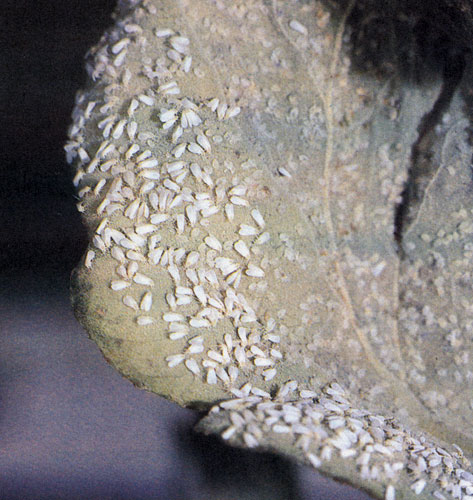
Caterpillars of apple lithocolletis form, from May to October, winding and long paths on the leaves of apple trees, cherry and cherry trees. There can be 10-15 such tracks on one sheet. Damaged leaves dry up and fall off prematurely. Treatment of trees with chemicals is recommended only in case of severe damage, it is carried out when the second generation takes off.
Goose
In spring, flower buds of apple trees, cherries, cherries and plums are often eaten away by apple geese ( Rhynchites bacchus) and several other species of this insect. The most dangerous is the apple goose, which lays eggs in the fruits of fruit trees. Damaged fruits develop unevenly and often rot.
Bark beetle and other pests that destroy the bark
Apricot leafworm mainly damages apricot, peach and cherry trees, less often - plum, apple and pear trees. Its caterpillars eat away corridors in the lower inner layers of the bark; the places where they have feasted are easy to spot by the heaps of rusty droppings they push out onto the surface of the bark. This kind of damage to the tree is often accompanied by gummosis - gum disease.
The leaf roller most often attacks old trees, penetrating under the bark in those places where it is injured, and lays its testicles there. Therefore, the affected areas should not be cleaned mechanically, so as not to further damage the trunk or branch.
It is even more difficult to deal with the fruit tree and bark beetles that settle on weakened trees. Here, preventive precautionary measures should be taken, which include the correct choice of a place for planting a tree, as well as providing it with proper nutrition. Too damp places or places where the ground is too dry are not suitable for planting fruit trees. Trees affected by bark beetle are identified by the following signs: their leaves begin to wither suddenly, and their branches dry. On the branches of such trees, as a rule, you can find tiny holes a millimeter in diameter. The bark beetle makes its corridors only under the bark, and the woodworm eats into the wood itself.
rodents
Dangerous pests of garden plants include hares and rodents. Hares and wild rabbits sometimes eat the bark of trees and shoots of ornamental shrubs in winter. In order to protect tree plantings from them, some preparation with a specific smell that repels animals is applied to the trunks of fruit trees for the winter. However, it is best to put wire or reed fences around the trunks.
During the years of active breeding field mice (grey vole - Microtus arvalis) the bark of fruit trees can also suffer from them. Its rodents in winter will gnaw at the surface of the earth. The vole eats bulbs and tubers of ornamental plants. To avoid losses, it is recommended to destroy mice in their burrows and underpasses using smoke bombs.
In gardens located next to a river or in damp, blocking places, there is another dangerous pest - a water rat ( Arvicola terrestris). It gnaws through the roots of fruit trees, eats root crops and underground parts of ornamental plants. Treatment of plants and soil with chemicals does not give good results. Therefore, it is recommended to invest in underground corridors dug by rodents, calcium carbide, smoke bombs or smoke out pests with exhaust gases. But all these methods give only a temporary effect, and therefore the fight against rodents has to be carried out constantly. The following measures are most effective: even before planting a tree, lay out a prepared pit around the entire circumference with a galvanized metal mesh with cells of about 2 cm; then the rodents can not get to the roots.
Birds
Birds, primarily house sparrow and greenfinch, peck out flower buds of currant, gooseberry, pear, apricot and peach trees in spring. Sparrows also destroy lettuce seedlings.
Birds are the culprits of large losses in the harvest of fruits and berries. So, house sparrow, black and song thrushes, common starling peck at ripe cherries, currants and grapes. They feast on ripening pears, apricots, peaches, peck out strawberries. Thrushes also love tomatoes.
We usually scare away birds in the garden and on the field with various mechanical devices. An effective measure is to stretch a nylon mesh over trees and shrubs; then the birds will not be able to fly onto the fruits at all. You can also drive them away with the help of various optical and sound devices (crackers, scarecrows, etc.).
Plant protection from pests
In the same way that we act when protecting plants from various diseases, we should act to protect plantings from uninvited guests from the animal world, namely: to direct the main efforts to preventive measures in order to reduce the number of potential pests or at least reduce the intensity of their attack.
Preventive measures include monitoring the condition of stored bulbs and tubers, reducing the relative humidity in greenhouses, limiting the reproduction of itch mites, ventilating the premises and systematically spraying plants with water, which is very effective in the fight against spider mites. High-quality seedlings taken from healthy mother plants, etc. will help us get rid of nematodes.
Since pests differ from each other in their biological characteristics, gardeners have to resort to a variety of protective measures. Sometimes the appearance of a pest can be minimized by eliminating the so-called. intermediate host, which is often weedy wild plants. In other cases, the mechanical collection of testicles, caterpillars, beetles will help; various baits will also come in handy, after which it is already easier to deal with the pest. The anthill that appeared in the greenhouse is poured with boiling water. Podurs or tails will also recede if we succeed in lowering the moisture content of the soil, or if we sprinkle its surface with a thin layer of lime, ash, sand, or crushed charcoal. To prevent excessive breeding of snails and slugs, it is recommended to sprinkle the paths with quicklime, etc.
Fruits, vegetables, bulbs and tubers of ornamental plants selected for winter storage must be completely healthy, without damage, because any flaws are the gates through which putrefactive fungi and bacteria penetrate first of all.
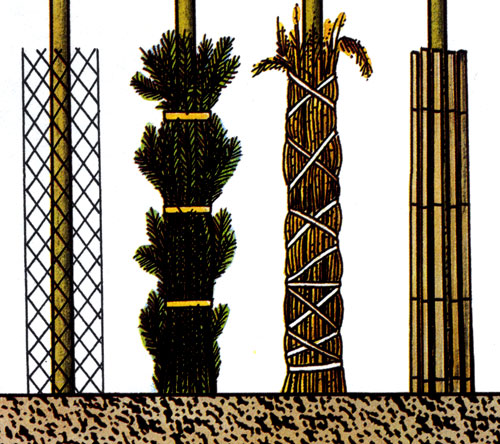
In the storage, immediately after laying vegetables and fruits, it is necessary to create conditions that limit the possibility of penetration of putrefactive fungi and bacteria. Most plant products are supposed to be stored at a temperature of 2-5°C and a relative humidity of 85-90%. When the humidity is below 80%, a lot of water evaporates from fruits with juicy pulp and roots, and when it is above 90%, fungi and, most importantly, putrefactive bacteria begin to multiply rapidly. By observing the correct ventilation regime and adjusting the level of air humidity, we create the most favorable conditions for the winter storage of fruits, vegetables, bulbs and tubers.
It is very important to carry out a thorough disinfection there before filling the storage, for example, by fumigation (8 g of sulfur is burned per 1 m 3 of space), having previously sealed all holes and cracks, and lubricated the metal parts with vegetable oil. The walls of the room are supposed to be whitewashed with lime or sprayed with a 5% formalin solution. Shelves, window frames and doors are processed in a similar way. 24 hours after disinfection, the storage facility is thoroughly ventilated. We must also not forget that tubers and bulbs of ornamental plants must be pre-treated before being placed in storage.
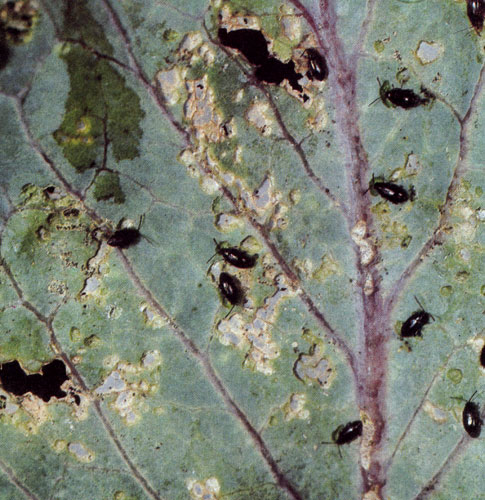
When storing root crops, garlic, potatoes, pome fruits for winter storage, it is necessary to carefully select healthy specimens, since plant products intended for nutrition cannot be chemically processed. Potatoes, fruits, onions are best laid in a thin layer or even in one row on the lattice shelves. Onions and garlic should be stored on shelves in dry rooms where the temperature is slightly below 0°C.
During storage, it is necessary to give all fruits, bulbs and tubers that have begun to deteriorate in a timely manner, and also not to store apples and pears longer than is practically possible. All this will be those preventive measures against losses in storage and against putrefactive diseases that affect vegetables, fruits, as well as bulbs and tubers of ornamental plants in the winter.

Diseases and pests of garden plants. Part 1 Diseases and pests of garden plants. Part 8
